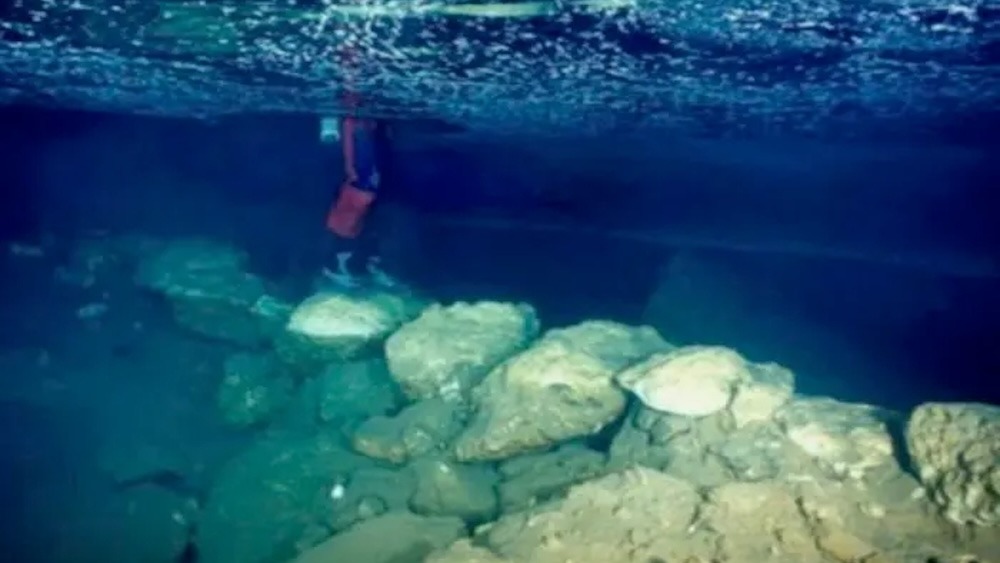Ancient submerged bridge in Spain reveals that humans inhabited Mediterranean island nearly 6,000 years ago
After analyzing a submerged bridge found in a Spanish cave, researchers have determined that humans inhabited the area earlier than previously thought.

A submerged, human-constructed limestone bridge found inside a cave on a Spanish island is much older than previously thought, pushing back the record of when humans inhabited the location, a new study finds.
Researchers discovered the limestone bridge in 2000 during a scuba-diving expedition inside the flooded cave in Mallorca, a Mediterranean island located off the eastern shore of Spain's mainland. At the time, researchers determined that the 25-foot-long (7.6 meters) bridge, which consists of large limestone blocks stacked on top of each other, was built around 4,400 years ago, according to a study published Friday (Aug. 30) in the journal Communications Earth & Environment.
"This dating was based on pottery fragments that were found inside the cave," lead author Bogdan Onac, a professor of geology at the University of South Florida, told Live Science. "But now we know that this [date] was wrong."
In addition to the broken artifacts, the cave was littered with bones from a now-extinct goat-antelope known as Myotragus balearicus, according to a statement from the university.
However, when people occupied the cave still remained unclear.
Related: Ancient humans used cave in Spain as burial spot for 4 millennia, 7,000 bones reveal
Even though Mallorca is a large island, it was one of the last to be inhabited in the Mediterranean. In contrast, Cyprus and Crete are considered to be the earliest islands in the area and were occupied at least 9,000 years ago, according to a study in the journal Science.
Get the world’s most fascinating discoveries delivered straight to your inbox.
To determine the true date of the bridge's construction, researchers studied a "distinct light-colored band" — akin to a "bathtub ring" — running along the bridge's upper portion, according to the study. The shift in coloration shows changes in sea level, as well as the development of calcite encrustations that formed on the bridge when the water rose.
Upon analyzing the mineral deposits, which are also known as speleothems, researchers determined that the bridge was constructed approximately 6,000 years ago, pushing back the timeline of human presence on the island by 1,600 years.
"This testifies that the sea level sat there for a couple hundred years, allowing the mark to happen," Onac said. "The time when the bridge was constructed also shows that people were utilizing this cave much earlier than previously thought, closing the gap between eastern and western Mediterranean settlements."
The researchers said further research is necessary to determine why Mallorca was settled later than other islands in the region, but it could be because the island lacked resources needed for survival, such as farmable land.
Jennifer Nalewicki is former Live Science staff writer and Salt Lake City-based journalist whose work has been featured in The New York Times, Smithsonian Magazine, Scientific American, Popular Mechanics and more. She covers several science topics from planet Earth to paleontology and archaeology to health and culture. Prior to freelancing, Jennifer held an Editor role at Time Inc. Jennifer has a bachelor's degree in Journalism from The University of Texas at Austin.


